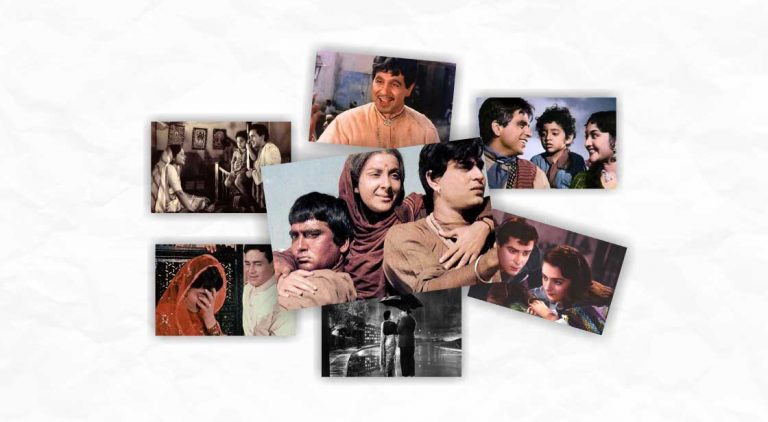To this day, the Golden Era of Indian cinema is remembered fondly. From extraordinary films to legendary actors, the era provided more to fans than any other period in the industry’s history. Here are 11 essential facts about this era in Bollywood cinema that you should be aware of.
1. When Most of the Classics Were Made
Many films from Bollywood’s Golden Era are still regarded as among the best made. Among them are timeless classics like Guru Dutt’s Pyaasa (1957) and Kagaz Ke Phool (1959), Raj Kapoor’s Awara (1951), Shree 420 (1955), Mehboob Khan’s Mother India (1957), and K Asif’s Mughal-E-Azam (1959). (1960). Aside from appearing on global lists of the greatest films ever made, each of these classics inspired and influenced subcontinental cinema for decades to come.
2. Coincides With the Birth of Modern India
The Golden Age of Indian cinema began around the time India gained independence from Britain in 1947. Many of the film directors, writers, and other artists who helped propel the film industry into its golden age were heavily influenced by India’s anti-colonial and independence movements, as well as other political events that helped shape modern India.
3. Spanned More Than a Decade
While the popular perception is that Bollywood’s Golden Era occurred in the 1950s, the actual period lasted two decades. It began in the late 1940s, peaked in the late 1950s, and only ended in the late 1960s.
4. Extraordinary Directors
Many of Hindi cinema’s most prolific directors emerged during this period. Legendary actor-director such as Guru Dutt and Raj Kapoor are a few names. Besides, film industry pioneers such as Mehboob Khan, Vijay Bhatt, and Bimal Roy are also on the list.
5. Legendary Actors
Many extremely successful and powerful female actors emerged during the Golden Era. To name a few: Nargis, Vyjayanthimala, Meena Kumari, Madhubala, Nutan, Waheeda Rehman, and Sadhana. Even today, male actors from the era are regarded as incomparable. Raj Kapoor; known today as the “greatest showman in Indian cinema!” Dilip Kumar—who pioneered a form of method acting! He influenced decades of Bollywood’s biggest superstars. Critically acclaimed Guru Dutt, and trendsetting superstar Dev Anand were among the period’s biggest successes.
6. The Emergence of Parallel Hindi Cinema
While mainstream Hindi cinema was clearly thriving, the era also saw the rise of parallel or alternate cinema cultures. These films were realistic, socially relevant, and poetic, as opposed to the formulaic storytelling that ensured the success of many of the era’s biggest blockbusters. Though parallel Hindi cinema experienced its own golden era later in the twentieth century, films from this era, such as Chetan Anand’s Neecha Nagar (1946) and Bimal Roy’s Do Bigha Zamin (1953), are regarded as having laid the groundwork.
7. Parallel Bengali Cinema
During the Golden Era, not only Hindi cinema found its footing. Bengali cinema, which is one of the country’s most critically acclaimed regional cinemas, experienced its own golden era beginning in the early 1950s. Satyajit Ray, Mrinal Sen, and Ritwik Ghatak—some of the industry’s most celebrated filmmakers to this day—all began making films during this period and produced their first classics.
8. Social Themes
Up until the late 1940s, mainstream Hindi cinema was mostly escapist and detached from the daily woes of life in mid-twentieth-century India. However, with the Golden Age came to a slew of highly successful films that embraced social realities and themes such as the travails of the working class and the chaos of city life.
9. Critical and Commercial Success
Before the Golden Era, critically acclaimed films were rarely commercially successful, while films with broad popular appeal were often too formulaic to garner critical acclaim. However, the 1950s saw the release of several films, including Awaara (1951), Pyassa (1957), and Mughal-E-Azam (1960), which were huge commercial successes as well as critical successes in India and abroad. Mehboob Khan’s Mother India (1957) earned the most money of any Hindi film at the time while also being remembered for the numerous awards it received and for being India’s first Academy Award nominee.
10. Fan Following Outside India
It was also during this time that Indian cinema gained a large following outside of South Asia. Raj Kumar’s films were popular in the Soviet Union, and classics like Mother India (1957) were dubbed in many European languages and successfully screened in Latin America, North Africa, and Southeast Asia.
11. Overlaps with Golden Era of Bollywood Music
Only in the following decades did Bollywood music achieve greater success, with its own golden era in the 1970s. However, the 1950s saw the rise of some of Bollywood music’s greatest stars, including Mohamaed Rafi, Kishore Kumar, and Lata Mangeshkar, as well as Naushad. The era celebrated music and laid the groundwork for its integral role in Indian cinema, from legendary composer S.D. Burman’s collaborations with poet and lyricist Sahir Ludhianvi for Pyaasa (1957) to musical duo Shankar-incomparably Jaikishan’s popular soundtrack for Awaara (1951).

